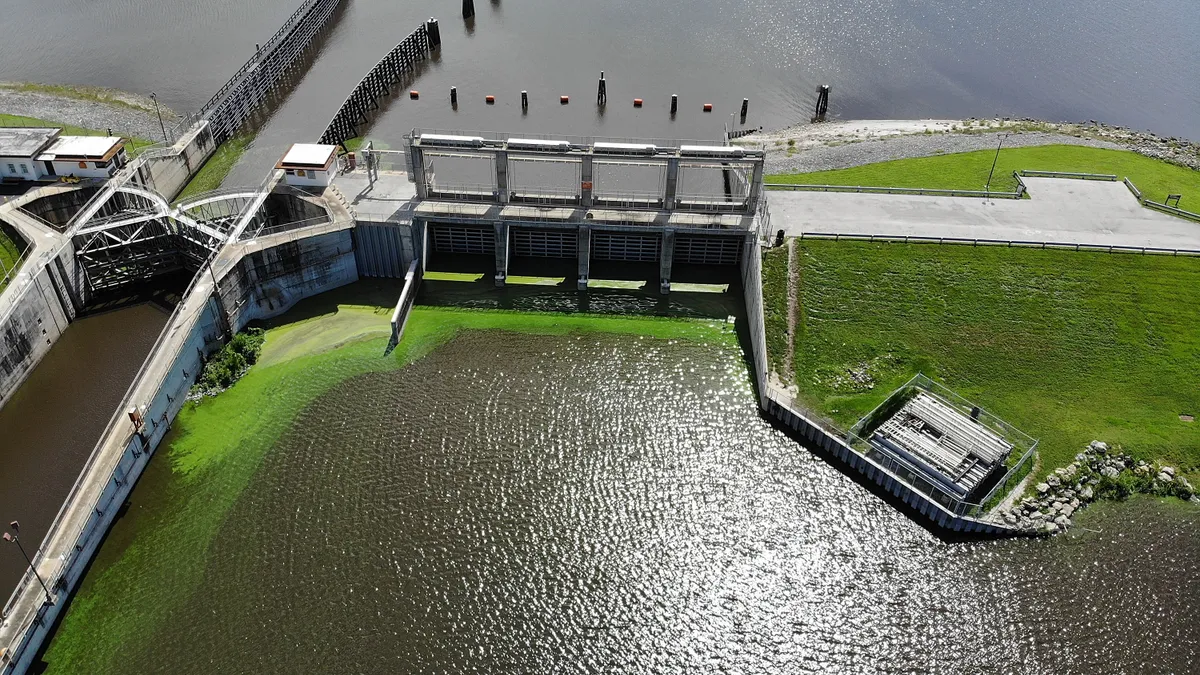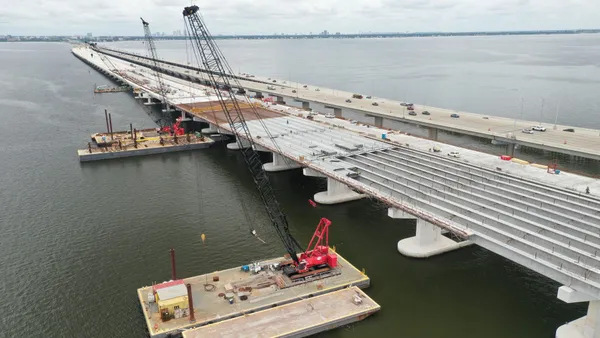Dive Brief:
- Florida has received an overall 'C' grade for its infrastructure network from the American Society of Civil Engineers (ASCE) in its 2021 Report Card for Florida’s Infrastructure, released late last week.
- That grade means the state's infrastructure is in mediocre condition overall. However, grades vary widely across the 14 categories researched, from a D- for Florida’s dams to a B+ for its solid waste infrastructure. The state's surface transportation is among the highest-performing in the nation, while its dams, levees and schools are in serious need of repair.
- Despite the middling grade, the report said that Florida has largely kept its infrastructure in impressive condition, considering it hosts one of the fastest-growing populations and sees some of the most severe weather in the country. However, the state must take additional steps to ensure its infrastructure is prepared for climate change impacts.
Dive Insight:
Report writers called for several actions to raise Florida’s grades and improve its ability to withstand or quickly recover from hazards. These recommendations include:
- Continue investing in critical transportation and freight sectors.
- Improve routine data collection and assessment for schools, dams and levees to inform safety and funding decisions.
- Further apply new approaches, materials and technologies across infrastructure sectors.
"This report demonstrates that Florida has done a commendable job across its infrastructure networks preparing for climate impacts and maintaining systems that are coping with growing usage due to tourism and population growth," said Kathi Ruvarac, chair of the report. "We hope legislators and all Floridians utilize this tool to spark changes where needed and encourage continued growth where we have succeeded."
The researchers graded on the basis of capacity, condition, funding, future need, operation and maintenance, public safety, resilience and innovation. Below is more detail about the categories.
Surface transportation
Florida’s roads (C+), bridges (B), and transit (C) are among the highest-performing in the U.S. Nearly 65% of Florida’s bridges are in ‘good’ condition compared to the national value of 45%, and only 31% of its major roadways are in poor condition, compared to 42% nationally.
One effective way Florida has maintained these assets is by indexing the state's gas tax to adjust with inflation, and then using those funds to maintain and expand roads and bridges.
Aviation and ports
Aviation (C+) and ports (B) also performed well. Florida invested more than $1.19 billion in improvements across all its seaports from FY 2011 to 2018, including deepening channels and harbors to accommodate increasingly popular large vessels. Its major airports are also all making significant investments to increase capacity and keep up with demand.
Dams and levees
On the negative end, Florida’s dams (D-) lack up-to-date data and only 41% of them have an Emergency Action Plan, compared with 81% nationally. Similarly, only 40% of its 90 levee systems (D+) have been assessed for risk.
Drinking water, stormwater and wastewater facilities
The state's drinking water (C), stormwater (C-) and wastewater (C) systems are succeeding in handling its growing capacity needs. Florida is a national leader in the reuse of reclaimed water, but severe weather and added capacity are putting strain on aging wastewater facilities.
Only 35% of the state's local jurisdictions reported having a stormwater program to fund and maintain the infrastructure, 27% of the stormwater utilities said operation and maintenance capabilities were only adequate to meet the most urgent needs, and 7% said their resources were not adequate to meet even urgent needs.
Energy and solid waste
The states’ energy (C+) and solid waste (B+) sectors have used innovative practices to improve their efficiency and reliability. While Floridians produce nearly triple the U.S. per capita average of solid waste (thanks in large part to tourists), the state recycled 42% of its municipal solid waste, well above the 2018 national average of nearly 24%. Florida also has the second largest waste-to-energy conversion rate in the country.
Schools
Florida’s average school building (D+) age is 31 years old, and the need for repairs and rehabilitation is only growing. To address aging facilities and looming capacity needs, state funding from motor vehicles licensing and gross receipt taxes has increased between 2016 and 2020 by nearly $40 million. However, this funding is not sufficient to meet the need.













